Sierra Entertainment, Inc. was an American video game developer and publisher founded in 1979 by Ken and Roberta Williams. The company is known for pioneering the graphic adventure game genre, including the first such game, Mystery House. It is known for its graphical adventure game series King's Quest, Space Quest, Police Quest, Gabriel Knight, Leisure Suit Larry, and Quest for Glory, and as the original publisher of Valve's Half-Life series.

Roberta Lynn Williams is an American video game designer and writer, who co-founded Sierra On-Line with her husband, game developer Ken Williams. In 1980, her first game, Mystery House, became a modest commercial success; it is credited as the first graphic adventure game. She is also known for creating and maintaining the King's Quest series, as well as designing the full motion video game Phantasmagoria in 1995.

Adventure Construction Set (ACS) is a game creation system written by Stuart Smith that is used to construct tile-based graphical adventure games. ACS was published by Electronic Arts in 1984 for the Commodore 64, then for the Apple II, Amiga, and MS-DOS. Smith previously developed several commercial adventure games of a similar style, such as Ali Baba and the Forty Thieves (1981).

Time Zone is a multi-disk graphical adventure game written and directed by Roberta Williams for the Apple II. Developed in 1981 and released in 1982 by On-Line Systems, the game was shipped with six double-sided floppy disks and contained 1,500 areas (screens) to explore along with 39 scenarios to solve. Produced at a time when most games rarely took up more than one side of a floppy, Time Zone is one of the first games of this magnitude released for home computer systems. Ports were released for Japanese home computers PC-88, PC-98 and FM-7 in 1985.
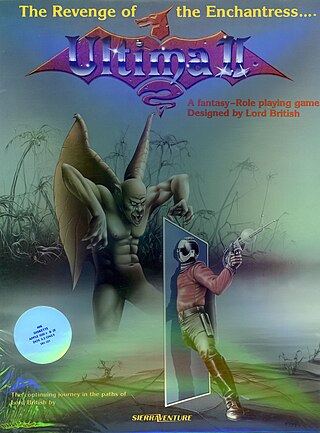
Ultima II: The Revenge of the Enchantress, released on August 24, 1982, for the Apple II, is the second role-playing video game in the Ultima series, and the second installment in Ultima's "Age of Darkness" trilogy.
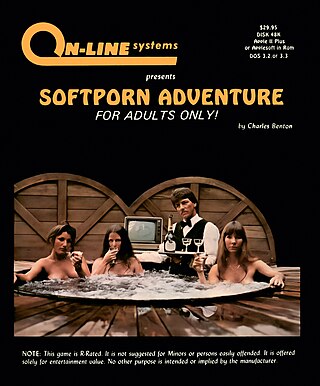
Softporn Adventure is a comedic, adult-oriented text adventure game produced for the Apple II in 1981. The game was created by Charles Benton and released by On-Line Systems, later renamed Sierra On-Line. Years later, Softporn Adventure was remade and expanded as Leisure Suit Larry series of adult-oriented video games, and the first entry in that series, 1987's Leisure Suit Larry in the Land of the Lounge Lizards, was a nearly direct graphical adaptation of Softporn Adventure. Another graphical version was released as Las Vegas for various Japanese computers in 1986 by Starcraft.

Mystery House is an adventure game released by On-Line Systems in 1980. It was designed, written and illustrated by Roberta Williams, and programmed by Ken Williams for the Apple II. Mystery House is the first graphical adventure game and the first game produced by On-Line Systems, the company which would evolve into Sierra On-Line. It is one of the earliest horror video games.

Kenneth A. Williams is an American businessman and game programmer who co-founded On-Line Systems together with his wife Roberta Williams. On-Line Systems eventually became Sierra On-Line and was ultimately renamed Sierra Entertainment. The couple were leading figures in the development of graphical adventure games. At its height, Sierra employed nearly 1,000 people prior to its acquisition in 1996.
Video games featuring sexual content has been found since the early days of the industry and can be found on most platforms and can be of any video game genre.

King's Quest: Quest for the Crown is an adventure game developed by Sierra On-Line and published originally for the IBM PCjr in 1984 and later for several other systems between 1984 and 1989. The game was originally titled King's Quest; the subtitle was added to the games box art in the 1987 re-release, but did not appear in the game.
Sirius Software was a California-based publisher of video games for the Apple II, Atari 8-bit computers, Commodore 64, and VIC-20. Most games were written for the Apple II, then ported to other systems. The company was founded in 1980 by Jerry Jewell and Terry Bradley and released over 160 games before folding in 1984. Sirius also developed games for the Atari 2600 which were published in 1982 and 1983 by 20th Century Fox Video Games. Fox's failure to pay Sirius resulted in company's downfall. Nasir Gebelli wrote some of the early hits from Sirius, establishing his reputation as an Apple II game programmer.

Leisure Suit Larry Goes Looking for Love (in Several Wrong Places) is the second game in the Leisure Suit Larry series of graphical adventure games, designed by Al Lowe and published by Sierra On-Line in 1988. Like its predecessor, Leisure Suit Larry in the Land of the Lounge Lizards, it was developed for multiple platforms, including MS-DOS, Atari ST and Amiga. It utilizes Sierra's Creative Interpreter (SCI0) engine, featuring 16-color EGA graphics and a mouse-based interface for movement. The story continues the exploits of Larry Laffer, who becomes stranded on a tropical island during an ill-fated vacation.

Leisure Suit Larry III: Passionate Patti in Pursuit of the Pulsating Pectorals is a graphical adventure game designed by Al Lowe and published by Sierra On-Line for DOS, Atari ST and Amiga in 1989 as the third entry in their Leisure Suit Larry series. The plot first follows series protagonist Larry Laffer, fresh from an abrupt divorce, as he combs through a tropical resort looking for love. After he meets the latest woman of his dreams, Passionate Patti, and leaves her to enter the wilderness, the player takes control of Patti to search for him.

Leisure Suit Larry 6: Shape Up or Slip Out! is the fifth entry in the Leisure Suit Larry series of graphical adventure games published by Sierra On-Line and is a sequel to the 1991 video game, Leisure Suit Larry 5: Passionate Patti Does a Little Undercover Work. Originally developed for MS-DOS in 1993, an enhanced CD-ROM version was published a year later.

Leisure Suit Larry in the Land of the Lounge Lizards is a graphic adventure game, developed by Sierra On-Line, and published in 1987. It was developed for the PC, DOS, and the Apple II and later ported to other platforms, such as the Amiga, Atari ST, Apple IIGS, Macintosh, and Tandy Color Computer 3. It utilizes the Adventure Game Interpreter (AGI) engine. In 1991, Sierra released a remake titled Leisure Suit Larry 1: In the Land of the Lounge Lizards for PC DOS, Apple Macintosh, and Amiga. This version used the Sierra's Creative Interpreter (SCI) engine, featuring 256 colors and a point-and-click, icon-driven user interface.

Hi-Res Adventure #6: The Dark Crystal is a graphic adventure game based on Jim Henson's 1982 fantasy film, The Dark Crystal. The game was designed by Roberta Williams and was the first Hi-Res Adventure directly released under the SierraVenture label in 1983. Versions were published for the Apple II and Atari 8-bit computers. An alternate version of the game intended for younger players called Gelfling Adventure was released in 1984.

Space Quest: Chapter I – The Sarien Encounter is a graphic adventure game, created by Scott Murphy and Mark Crowe, and released in October 1986 by Sierra On-Line. It is the first game in the Space Quest series, and sees players assume the role of a lowly janitor on a research ship, who becomes involved in stopping an alien race using a new form of technology for evil purposes.
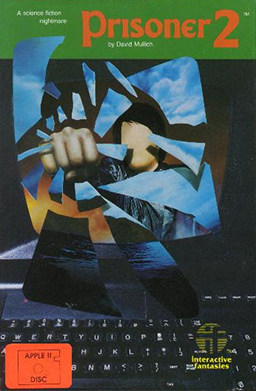
The Prisoner 2 is a video game published in 1982 by Edu-Ware. It is a remake of the 1980 game The Prisoner.
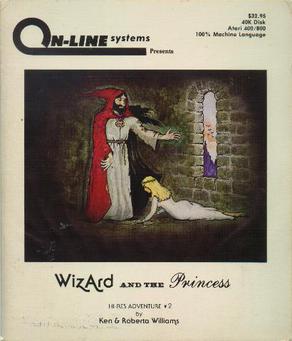
Wizard and the Princess is a graphic adventure game written for the Apple II and published in 1980 by On-Line Systems. It is the second installment in the Hi-Res Adventures series after Mystery House. Unlike its predecessor, which featured monochrome drawings, Wizard and the Princess introduced color graphics. Ports for the Atari 8-bit computers and Commodore 64 were released in 1982 and 1984 respectively. The 1982 self-booting disk version for IBM PC compatibles was renamed Adventure in Serenia.
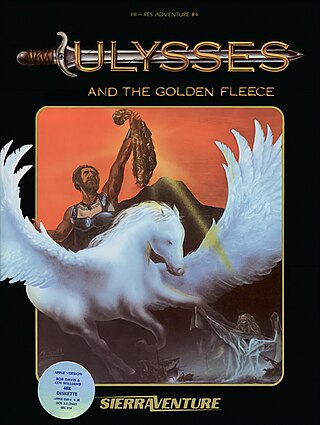
Ulysses and the Golden Fleece is a graphic adventure released by Sierra On-Line in 1981 for the Apple II. It was created by Bob Davis and Ken Williams as part of the Hi-Res Adventure series. With a still image displayed in the upper portion of the game screen, the player interacts the via a two-word command parser. The game was ported to the Atari 8-bit computers, Commodore 64, and IBM PC.

















